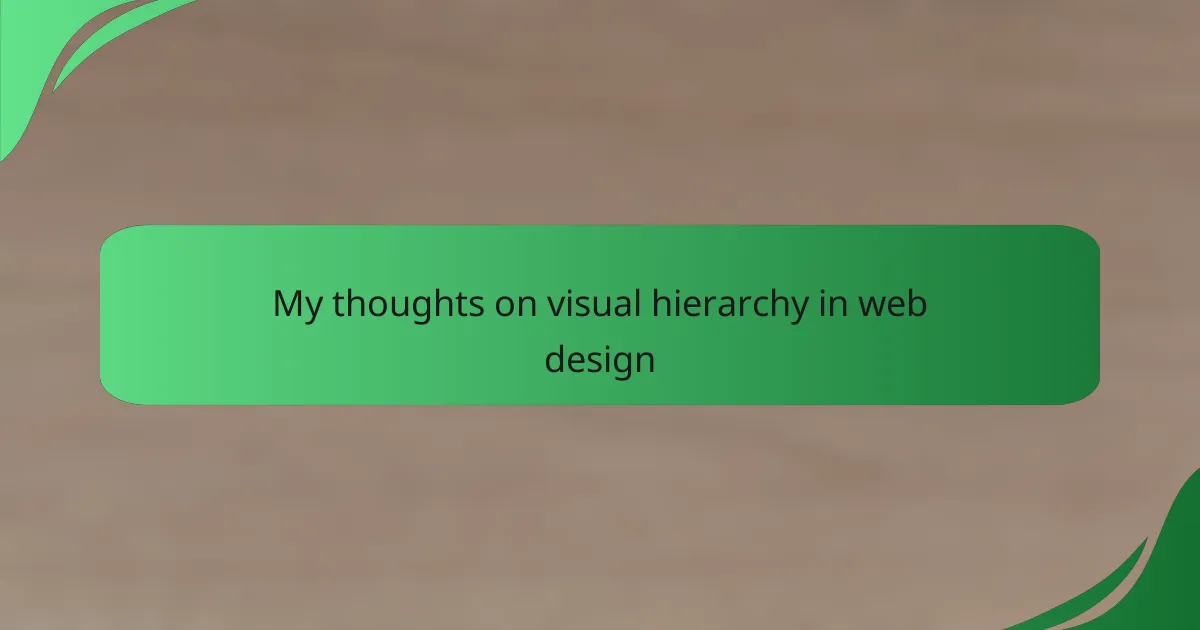Key takeaways User-centered design is crucial for platforms like Netflix, enhancing navigation and content discovery through intuitive layouts. Personalization and consistent user experience across devices are key UX principles that keep viewers engaged and satisfied. Visual hierarchy and aesthetic elements, such as vibrant thumbnails, play a significant role in attracting user attention and enhancing enjoyment. […]
Key takeaways Effective interaction design prioritizes user engagement, utilizing visual cues and immediate feedback to create enjoyable experiences. Consistency in design elements enhances user familiarity, reducing errors and improving navigation across platforms. Tools like Adobe XD, Figma, and InVision facilitate collaboration and prototyping, significantly refining the design process. Exploring diverse design projects on platforms like […]
Key takeaways Understanding interface design principles, like consistency and feedback, is crucial for enhancing user experience and engagement. Wireframing serves as a vital tool for quick iterations, effective communication, and identifying usability issues early in the design process. Moqups features, such as real-time collaboration and a library of templates, facilitate efficient and intuitive wireframing. Embracing […]
Key takeaways Usability in forums significantly impacts user engagement; key aspects include navigation, readability, and error handling. Community feedback is essential for improvement; it fosters user investment and reveals insights into evolving needs. Combining qualitative and quantitative methods, such as user surveys and observational studies, enhances usability assessments. Real-time user feedback and iterative design changes […]
Key takeaways Visual hierarchy is essential in web design, guiding user attention and enhancing navigation. Key elements include size, color, spacing, font weight, and alignment, each influencing how users interact with content. Common mistakes to avoid are neglecting contrast, overcrowding pages, and misusing font sizes, which can hinder user experience. Effective design techniques, such as […]
Key takeaways Interface interaction design enhances user experience by creating intuitive navigation and emotional connections with digital products. Key principles of usability, accessibility, and feedback are essential for effective interaction design, improving user satisfaction and retention. Spotify’s design features, like personalized playlists and intuitive layout, foster engagement and make music discovery enjoyable. Suggestions for improvement […]
Key takeaways Intuitive design is crucial for enhancing user engagement and creating a seamless experience across digital platforms. User testing reveals valuable insights, identifying friction points and preferences that inform and improve design choices. Effective feedback mechanisms foster a sense of community and connection between users and designers, leading to greater satisfaction. Design simplicity, along […]
Key takeaways A/B testing allows for effective comparison of design variations, enabling data-driven decisions that improve user engagement. Google Optimize simplifies the A/B testing process with its user-friendly interface and integration with Google Analytics for tracking results. Best practices include testing one variable at a time, using an appropriate sample size, and conducting thorough data […]
Key takeaways Intuitive navigation menus enhance user experience and reduce frustration, emphasizing clarity and simplicity. Regular testing and user feedback are essential for optimizing menu layouts and improving engagement. Implementing responsive design ensures seamless navigation across different devices, increasing user satisfaction. Structured navigation leads to measurable improvements, such as lower bounce rates and higher page […]
Key takeaways Effective interface design hinges on principles such as consistency, feedback, accessibility, simplicity, and intuitiveness. Brand alignment enhances user experience by fostering trust and ensuring a cohesive message across platforms. Trello’s features, such as boards and cards, facilitate organized task management, making it easier to track progress visually. Strategic planning and regular feedback loops […]








